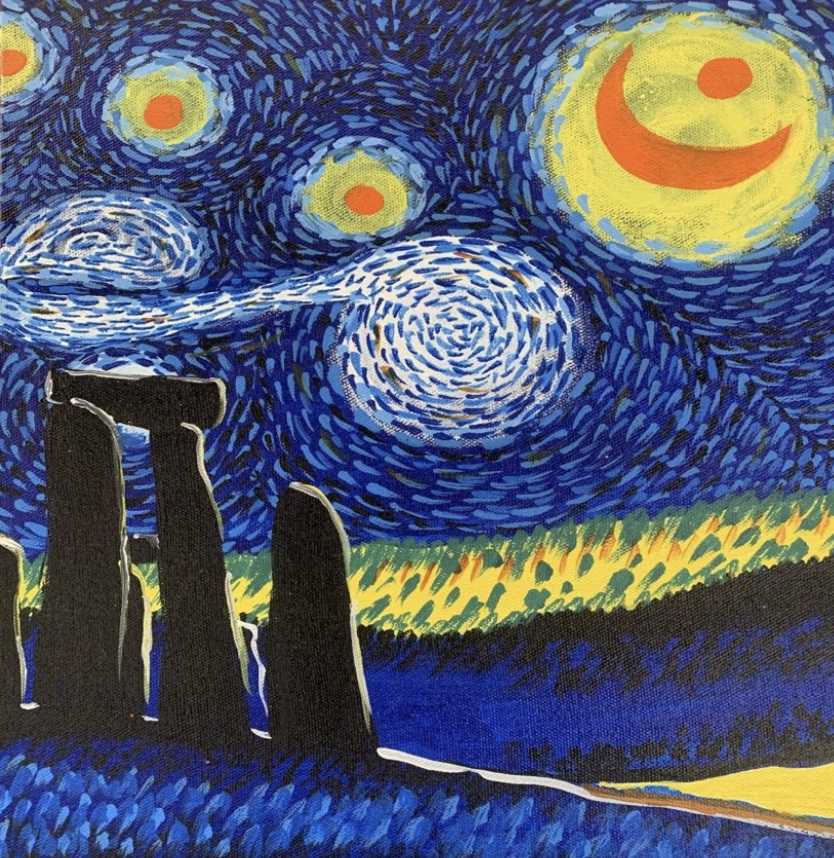By: Sneha Agarwal
What is Art? Is the definition given by a four-year-old the same as that interpreted by an adult? Do you remember your first artistic experience? For instance, when I held the paintbrush as a kid initially, it gave me a certain power. A belief and an undying hope that I could make anything look attractive. It brought happiness and a splash of colour to my world. Artwork made illusions seem real.
The question remains as to why their answers are different. The possible logic could be that their understanding of the concept is distinct and has evolved with the passing years. Art is a form of expression. Fine art is like meditation, as with each stroke of colourful paint, you become more aware of the raw truth of your creation.

Have you ever wondered why you feel calm when you listen to music? Why do certain emotions arouse when you watch your favourite fictional characters on screen? Do you often feel inspired after finishing a good read? Art is more than just a painting, song, or drama. It is an intuition that cannot be imparted in words, an instant connection that touches our lives and leaves its imprint.
Art captures the still life in its most expressive form. We often spend time observing those things that catch our attention. Appreciation of art increases our blood flow by 10% in the medial orbitofrontal cortex. This increase in the blood flow is similar to when you gaze into the eyes of someone you love. It elevates our senses, consciousness, and well-being.

Do you realize that no two pieces of art are ever the same? It is mainly because the artists are always in a different state of mind, occupied with dissimilar thoughts or emotions, and possess a variant skill set which reflects on the distinctive quality of work. The artworks demonstrate their unique identity.
Why do art critics use words like “vibrant”, “gloomy”, “lively”, “cold”, or “chaotic”? How you perceive art is linked to your understanding of universal objects. Every piece of work is inspired by some of the elements in our life. Our art represents our mood, our lifestyle, and our interests. The choice of colour palette, the theme, the design – all trigger the aesthetic emotions in perceivers.
In the psychology of art, what makes art different from other hobbies? What makes it good? The kind of artifacts which reflect the inner zeal of the artist, which speak to our emotions directly, are quality art. Influential and impactful artistry reveals the genuine sentiments of the painter. This is the reason why we feel joyful when we see bright, though-provoking paintings, and why dark art makes us feel depressed. Detailed representation speaks to us in a language that our heart can comprehend. In the Expressionist Movement, which originated in the early 20th century, the artists focused on conveying emotional experience rather than depicting realism.
We strive to decipher the message that the artist is trying to communicate, by associating ourselves with the scene being portrayed. Our mirror neurons enable us to “simulate” other people’s actions, as well as the intentions and emotions behind those actions. Hence, when we observe a piece of art, we fire the mirror neuron as the artist did while creating the painting. This phenomenon is called “embodied cognition”.
“Art is about emotions; If it needs to be explained, it is no longer art”
– Pierre-Auguste Renoir.
Art is emotional therapy. It is a healing technique used by professionals all around the world. As Vincent Van Gogh said, “Art is to console those who are broken by life.” Many experts believe that it can play an important role in the path of reparation and recovery from depression. Art is quite interdependent with emotions, as it is a method to cope with stress, it helps us communicate our mood better—be it anger, happiness, sadness, joy, or love—and boosts self-awareness. To look at art is to breathe creativity. It enables you to escape to a parallel three-dimensional universe through your fantasies and imagination. You come back as a new person every time, because after a creative experience, you tend to see the world as you never have.
Art is an ultra-energetic vibe creating a perfect synergy between notion and passion—it is immense beauty with imperfections. Primary deviation from the initial dreamy ploy seems grimy at first, but that is what leads to a masterpiece. Because each artwork illustrates an unknown story and presents new dreams for us to follow.
Editorial note: this article was published on the LinkedIn page of the IE Arts & Business Club (link). The featured image is called: Travelling to places through the medium of art – Northern Lights Winter Landscape.







